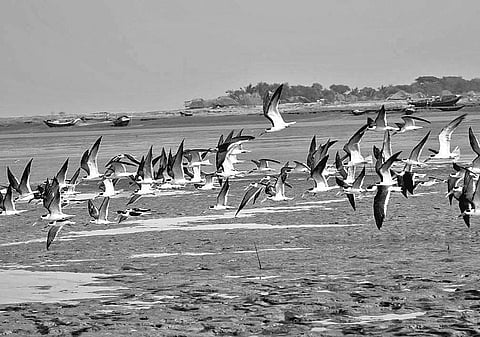

COIMBATORE: According to the Coimbatore Nature Society (CNS), which conducted a study of wetlands in the district, the arrival of migratory bird species in Coimbatore is sharply declining. Experts say most waterbodies in western TN, due to rainfall, have a widespread availability of prey, which could be a reason for the birds not to converge at a single place.
The study was conducted from November 12 - 17 by a team of 35 members from the society, and it was coordinated by senior bird watcher A Pavendhan. The study has revealed that only 25 migratory bird species were present in wetlands of Coimbatore compared to 47 species observed in January this year.
According to the study, migratory bird count declined to 1,060 individual birds from 2,816 recorded during January. Among 25 migratory bird species, eight are water birds and the remaining 17 are terrestrial birds. “Migratory waterfowl species are missing in most of the wetlands.
In fact, Northern Shoveler was the only migrant duck species recorded during the study. Even waders like Sandpipers, plovers are missing or very low in number. Warblers are the ones who are usually the first ones to arrive but are largely missing and very few.
Migratory raptors like Booted eagles, Greater Spotted eagles, Ospreys and Marsh Harriers are missing in most wetlands. Even resident birds like Pelicans, Eurasian Spoonbills, Ibises, storks are very few in number,” said G Prakash, a senior bird watcher in CNS.
This year, we have experienced very good rainfall and almost all the wetlands are filled with water. This is not just true of Coimbatore, but our neighbouring districts as well. In a year of good rainfall, migratory birds have no reason to congregate in one place and tend to spread out.
This could be one reason for less migratory birds. Upcoming January migratory bird estimate is expected to validate this,” said A Pavendhan.
He added “Due to recent tank desilting work carried out in various tanks, the natural vegetation has been removed from lot of tank bunds.
Also, the gradual gradient in tanks have been replaced by a steep gradient. This makes wetlands unsuitable for wading birds like sandpipers and migratory raptors like Booted eagles, Ospreys, Greater spotted eagles and Marsh Harriers.”
The study also revealed how the flow of untreated domestic sewage and industrial sewage into the wetlands has resulted in a decline in fish populations and kept off birds which feed on them.